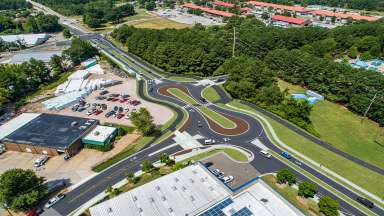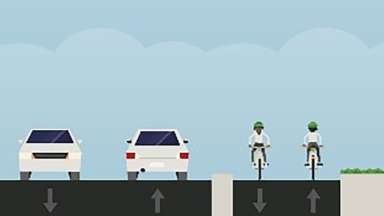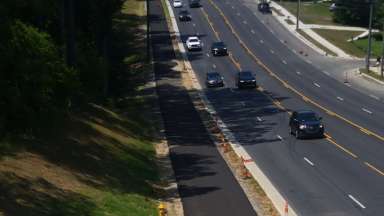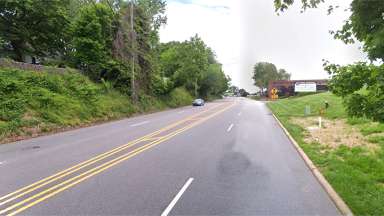Jump To:
Motorists, bicyclists, and pedestrians all play a role in keeping one another safe on the road. Take just a few minutes to review these safety tips!
For Motorists
- Safety is a shared responsibility—motorists need to be watchful for pedestrians and bicyclists, drive at slower speeds, avoid distraction, and know the laws regarding when pedestrians have the right-of-way.
- Please do NOT park in bike lanes. This can create extremely harmful circumstances for both bicyclists and drivers.
- Be prepared to yield to pedestrians in crosswalks.
- Never pass a vehicle that is stopped for pedestrians.
- Before making a turn, be sure the path is clear of any pedestrians or bicyclists.
- Slow down in areas where you are likely to find pedestrians, such as near bus stops, schools, and playgrounds.
- Look carefully behind your vehicle for approaching pedestrians before backing-up.
- Keep an eye out for pedestrians at night that may be walking near or across the road.
- Avoid distractions such as food, passengers, and using mobile devices. Talking and texting while driving is both dangerous and illegal in many places.
- Be prepared for bicyclists to use the entire lane. Bicyclists are entitled to the entire lane if needed.
- Give bicyclists a wide berth when passing and only pass when it is safe to do so.
For Pedestrians
- Look for cars and bicyclists in all directions—including those turning left or right—before crossing the street; never assume a driver will stop.
- Be careful crossing multiple lanes of traffic. Make sure each lane of traffic is clear before you cross.
- Enhance your visibility at night. Walk in well-lit areas, carry a flashlight, or wear something reflective, such as stickers or armbands, to be more visible.
- Avoid distraction. More and more we see people texting or talking on cell phones when crossing streets; this diminishes the ability of your two key senses—hearing and seeing—that are used to detect and avoid cars. So particularly when crossing streets, put down the phone for a few seconds.
- Be predictable to drivers and follow the rules of the road—obey signs and signals.
- Obey all pedestrian traffic signals.
- Watch for cars backing up in parking lots; brake lights can mean that a car is about to back up.
- Cross the street where you have the best view of traffic. At bus stops, cross behind the bus or at the nearest crosswalk.
- Always walk on the sidewalk; if there is no sidewalk, walk facing traffic and as far from the roadway as you can.
For more pedestrian safety tips, visit the Pedestrian and Bicycle Information Center.
For Bicyclists
- Wear a helmet. It could save your life. However, helmets are fallible. Do not be fooled into a false sense of security. Riding as safely as possible is still very important.
- Use a light and reflectors when bicycling at night and be as visible as possible.
- Ride in the direction of traffic. Drivers may not be looking for you if you are riding the wrong way.
- Obey all signs and signals. This includes stopping at stop signs and red lights.
- Use all of your senses – watch and listen for cars, particularly at intersections and driveways.
- Avoid distractions such as listening to headphones or answering phones when riding.
For more bicyclist safety tips, visit the Pedestrian and Bicycle Information Center.



